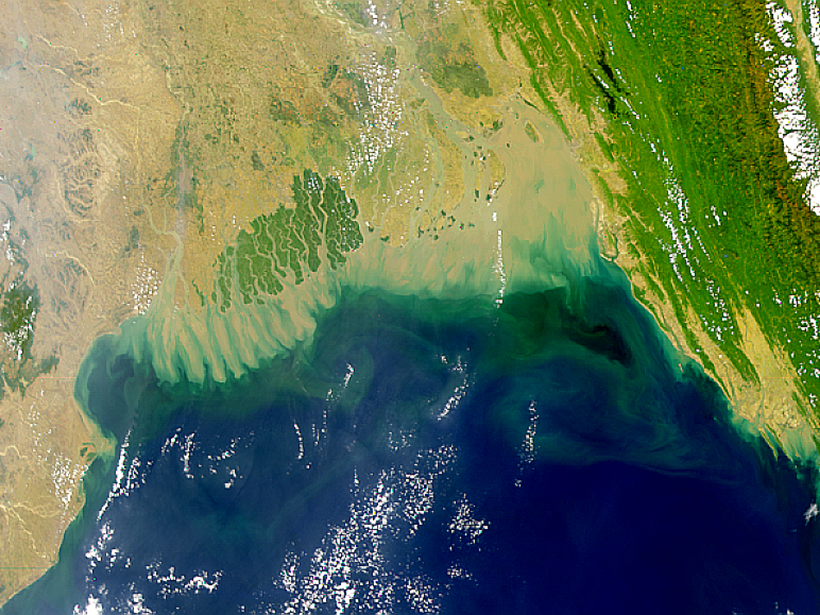Source: Journal of Geophysical Research: Solid Earth
Although researchers have long understood that the tectonic evolution of the Bay of Bengal, located east of India, is intertwined with the opening of the Indian Ocean, the specifics of these events have yet to be unraveled. Because the standard methods of resolving the age and origin of the underlying crust—the crucial information needed to solve this puzzle—have so far yielded ambiguous results, Talwani et al. have combined new, multidisciplinary data sets to obtain a better understanding of the region’s tectonic history.
Using magnetic data from several tracks in the bay’s Western Basin, the team identified a series of magnetic anomalies and used these to date the Western Basin’s crust as Early Cretaceous in age. Next, by correlating these anomalies with conjugate ones in the western Enderby Basin, located off of East Antarctica, the researchers established that seafloor spreading between Antarctica and India began 132 million years ago and occurred in a northwest–southeast direction.
Additional gravity, seismic, and petrologic data suggest that the next step in the region’s tectonic evolution occurred about 120 million years ago, when the arrival of a hot spot near India reorganized seafloor spreading. This event, conclude the researchers, opened a new spreading center along a line that now joins two volcanic provinces, called the Rajmahal and Sylhet traps, which are located in India on opposite sides of northern Bangladesh. Although these provinces were previously believed to be the products of separate eruptions, the data in this study suggest that both composed a single spreading center about 118 million years ago.
Collectively, the results indicate that this former spreading center forms the boundary between oceanic and continental crust in this region and that oceanic crust underlies Bangladesh and the eastern Bay of Bengal. Unlike most of the planet’s ocean-continent boundaries, this one is unusual in that it is located on shore, several hundred kilometers inland, because of the large volume of sediments shed following the uplift of the Himalayas.
Despite the progress made in this study, many questions remain, according to the researchers. Additional studies, including a seismic refraction survey, will be necessary to further refine the details regarding this region’s complex tectonic evolution. (Journal of Geophysical Research: Solid Earth, doi:10.1002/2015JB012734, 2016)
—Terri Cook, Freelance Writer
Citation:
Cook, T. (2016), Deciphering the Bay of Bengal’s tectonic origins, Eos, 97, https://doi.org/10.1029/2016EO057813. Published on 22 August 2016.
Text © 2016. The authors. CC BY-NC-ND 3.0
Except where otherwise noted, images are subject to copyright. Any reuse without express permission from the copyright owner is prohibited.

